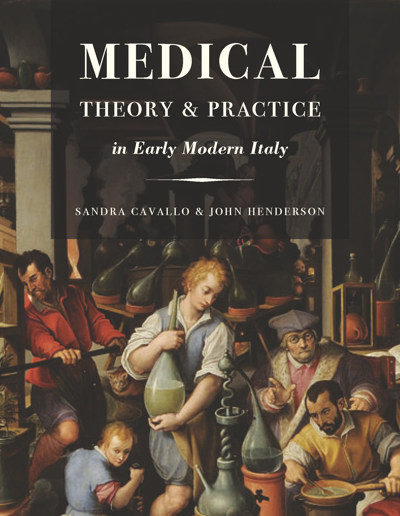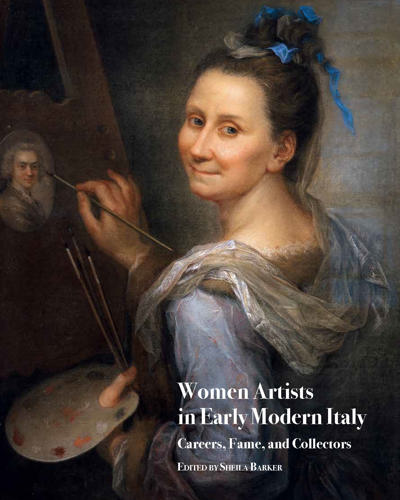
Artemisia Gentileschi in a Changing Light
Sheila Barker (ed)
- Pages: 247 p.
- Size:220 x 280 mm
- Illustrations:22 b/w, 195 col.
- Language(s):English, Italian
- Publication Year:2018
- € 140,00 EXCL. VAT RETAIL PRICE
- ISBN: 978-1-909400-89-4
- Hardback
- Temporarily Out of Stock
New findings on the painter's life and oeuvre, studied through wide-ranging methodologies.
“(…) produced to the highest standards with excellent colour plates (…)” (Richard E. Spear, in The Burlington Magazine, 160, September 2018, p. 797)
“All of the authors offer insightful studies that deepen our knowledge of this extraordinary artist, making Artemisia Gentileschi in a Changing Light a welcome addition to the expanding literature on the painter. Moreover, the essays should inspire future scholars to work collaboratively not only on Gentileschi but on other early modern artists. Indeed, the variety of methodological approaches utilized here demonstrate that breadth and depth are seldom achieved by one scholar alone.” (Marjorie Och, in Early Modern Women: An Interdisciplinary Journal , 14/1, 2019, p. 218)
Sheila Barker, Ph.D. (Columbia University, 2002) is the founding director of the Jane Fortune Resarch Program on Women Artists, based at Medici Archive Project in Florence. Her previous publications include "Artiste nel chiostro" (Nerbini, 2016) and "Women Artists in Early Modern Italy: Careers, Fame, and Collectors" (Harvey Miller / Brepols, 2016).
Raised to the status of an international luminary by her contemporaries and now revered as one of the defining talents of the seventeenth century, Artemisia Gentileschi poses urgent questions for today’s scholars. The recent outpouring of new attributions and archival discoveries has profoundly enriched our knowledge of the artist, but it has also complicated, and sometimes contradicted, the former storyline. If she was illiterate and unschooled, how did she befriend Galileo and court playwright Jacopo Cicognini? If she could not pay her bills, why did she continue to spend lavishly? How can we define her authorship if we admit workshop productions to her oeuvre? In these essays, an international cast of scholars and experts grapples with these problems, opening new paths of inquiry and laying bare their methodologies in fields as diverse as laboratory analysis, archival research, cultural history, literary analysis, and feminist art history. Among these approaches, connoisseurship takes center stage. By reconstructing the chronology and rationale of Artemisia’s artistic iter, connoisseurship reveals the richness of her visual dialogues, including those with prominent contemporaries such as Caravaggio, Annibale Carracci, Vouet, Cristofano Allori, and Stanzione; with past artistic giants like Donatello and Michelangelo; and with the various hands who passed through her workshop as collaborators and assistants. These essays infuse our understanding of Artemisia with complexity and nuance, yet they also trace her characteristic mix of intelligence and verve in her art, her correspondence, and her deft social maneuvering, running like a thread through all stages of her life.
Acknowledgments
Introduction
Sheila Barker
Identifying Artemisia: The Archive and the Eye
Mary D. Garrard
Mary Magdalene in Ecstasy and the Madonna of the Svezzamento: Two Masterpieces by Artemisia
Gianni Papi
Deciphering Artemisia: Three New Narratives and How They Expand our Understanding
Judith W. Mann
Unknown Paintings by Artemisia in Naples, and New Points Regarding Her Daily Life and Bottega*
Riccardo Lattuada
Artemisia Gentileschi’s Susanna and the Elders (1610) in the Context of Counter-Reformation Rome
Patricia Simons
Artemisia’s Money: A Woman Artist’s Financial Strategies in Seventeenth-Century Florence
Sheila Barker
Artemisia Gentileschi: The Literary Formation of an Unlearned Artist
Jesse Locker
Women Artists in Casa Barberini: Plautilla Bricci, Maddalena Corvini, Artemisia Gentileschi, Anna Maria Vaiani, and Virginia da Vezzo
Consuelo Lollobrigida
‘Il Pennello Virile’: Elisabetta Sirani and Artemisia Gentileschi as Masculinized Painters?
Adelina Modesti
Allegories of Inclination and Imitation at the Casa Buonarroti
Laura Camille Agoston
Mary Magdalene in Ecstasy by Artemisia Gentileschi. A Technical Study
Christina Currie, Livia Depuydt, Valentine Henderiks, Steven Saverwyns, and Ina Vanden Berghe





